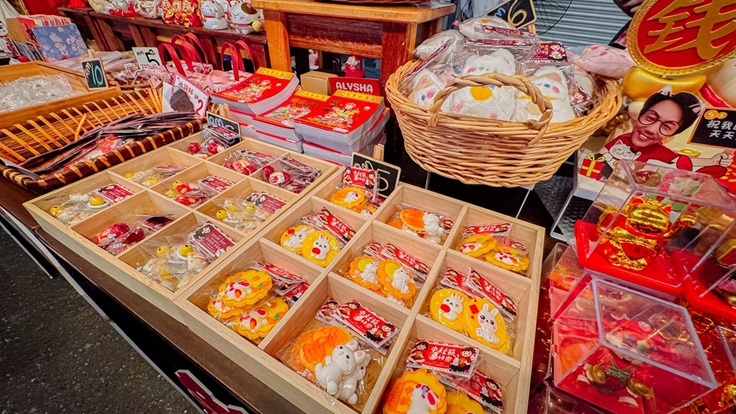
Image courtesy of DBKU FB
By Yong Soo Heong
Every year when the moon is at its roundest and brightest, families across Asia gather to celebrate the Mid-Autumn Festival — a tradition steeped in legend, layered with meaning, and deliciously wrapped in pastry.
Known as the Mooncake Festival in Malaysia, this celebration is more than just a feast; it’s a cultural bridge linking generations, geographies, and stories.
Origins: From Rebellion to Romance
The festival’s roots stretch back over 2,000 years to China’s Han dynasty, where moon worship was tied to harvest rituals and gratitude.
But the most famous tale is one of rebellion: during the Yuan dynasty, mooncakes were used to conceal secret messages coordinating a Han uprising against Mongol rule. The revolution succeeded — and the mooncake became a symbol of unity and resistance.
Another beloved legend tells of Chang’e, the moon goddess who drank an elixir of immortality and floated to the moon, leaving behind her devoted husband Hou Yi.
On the 15th day of the eighth lunar month, he would lay out her favourite fruits and cakes, hoping to glimpse her in the moonlight. Today, many still offer mooncakes to the moon in her honour.
Malaysia’s Multicultural Moonlight
In Malaysia, the Mooncake Festival is a vibrant blend of Chinese tradition and local flavour. While it’s primarily celebrated by the Chinese community, its appeal has grown across ethnic lines — thanks to the irresistible allure of mooncakes and lanterns.
Shopping malls and night markets come alive with mooncake booths offering everything from traditional lotus paste to durian, matcha, and even Musang King fillings.
Children carry colourful paper lanterns shaped like rabbits, dragons, or cartoon characters, often lit by LED lights instead of candles.
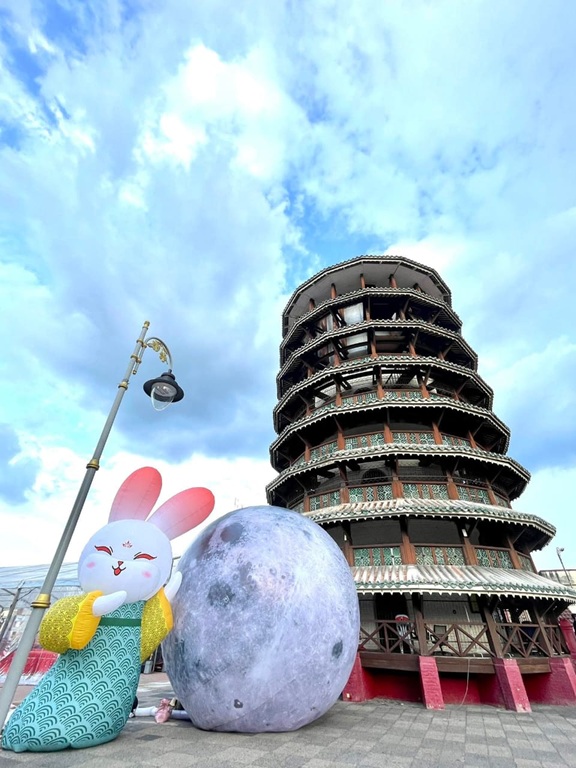
Teluk Intan’s famous clock tower amid the gaiety of the mooncake festival
With this year’s festival slated for Monday, Oct 6, celebrations on the weekend of Oct 4-5 will be in full swing, especially with the lantern processions by the young and also not-too-old in neighbourhood precincts.
In Teluk Intan, Perak, its famous “Leaning Tower” comes alive this year as it has been spruced up for the festival.
In Kuching, it has been mooncakes galore these few days. To mark the ethnic diversity in Sarawak, the 22nd Kuching Inter-Cultural Mooncake Festival 2025 showcased various traditions steeped in history, filled with lights, lanterns, mooncakes and togetherness.
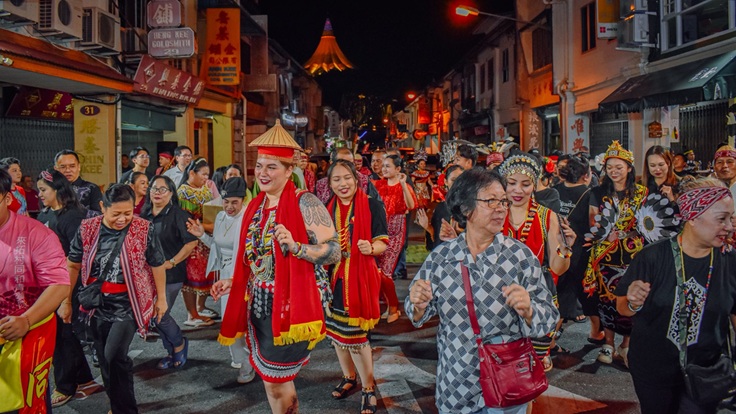
Full of joy and togetherness at the 22nd Kuching Inter-Cultural Mooncake Festival 2025
With more than 160 stalls designated for the festival in the city, the annual celebration brought food, culture and people of all races together under one bright, beautiful full moon. There was also a walkabout on Sept 30 by Dato Haji Hilmy Othman, the Mayor of Kuching North.
As for Kuching South, a Mooncake Festival 2025 is also being held from Oct 2 to 12 at the Malaysia-China Friendship Park, from 4 p.m. to 11 p.m.
On the night of October 6, the Kuching South City Council will distribute lanterns and mooncakes to children, allowing them to experience the joy of the Mid-Autumn Festival spirit.
The Mayor of Kuching South City Council (MBKS), Dato Wee Hong Seng, said that the Mooncake Festival is one of the most meaningful celebrations in Chinese culture.
“It is a time to gather with family and friends, to share mooncakes, and to enjoy the beauty of the full moon. It’s also about strengthening our community spirit and passing on traditions to the younger generation,” he said.
Hong Kong: Urban Elegance Meets Tradition
In Hong Kong, the Mid-Autumn Festival is a dazzling affair. The city’s skyline competes with the moon as Victoria Park transforms into a lantern wonderland. Giant installations — from mythical creatures to modern art — draw crowds nightly, while families picnic under the moon with pomelo fruits and mooncakes.
Hong Kong’s mooncake scene is famously innovative. Bakeries roll out lava custard mooncakes, snow skin varieties, and even vegan options. Corporate gifting is a big deal, with luxury brands packaging mooncakes in ornate boxes that resemble jewellery cases.
One unique tradition is the Fire Dragon Dance in Tai Hang, where a 67-meter-long dragon made of incense sticks winds through the streets, accompanied by drummers and dancers. It’s a spectacle that blends folklore, fire, and fierce community pride.
China, a Public Holiday in the Homeland of the Moon
In mainland China, the Mid-Autumn Festival is a public holiday — a time for family reunions, moon gazing, and poetic reflection. Cities like Hangzhou and Suzhou host lakefront lantern displays, while rural villages maintain age-old customs like moon worship and ancestral offerings.
The mooncake remains central, though its form varies by region. Cantonese mooncakes are rich and dense, often with salted egg yolks. Suzhou’s are flaky and savoury. Yunnan’s feature ham. In recent years, brands like Starbucks and Haagen-Dazs in China have also entered the fray, offering ice cream mooncakes and coffee-infused versions.
Beyond food, the festival is a time for poetry and nostalgia. Phrases like “When the moon is full, people come together” echo across generations, reminding everyone that no matter how far apart we are, the moon connects us.
A Festival of Light and Longing
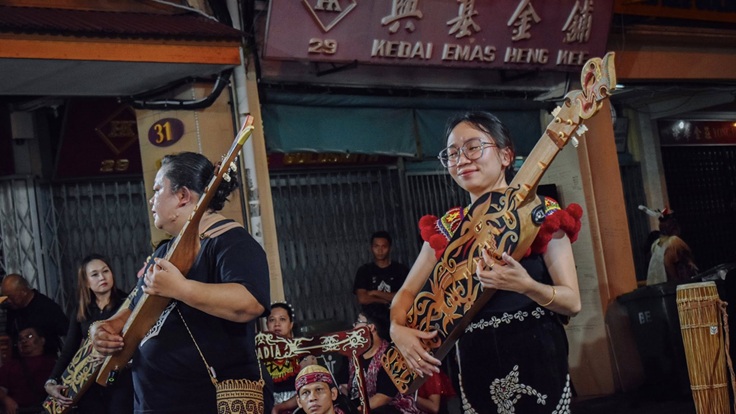
Kuching — unity in diversity during the mooncake festival
Whether in the bustling streets of Hong Kong, the housing tamans of Malaysia, or the courtyards of China, the Mid-Autumn Festival is a celebration of togetherness, memory, and moonlight.
It’s a time to savour sweetness — in pastry and in life — and to look up at the same moon that has watched over us for centuries. So, light a lantern, share a mooncake, and let the stories rise with the moon.
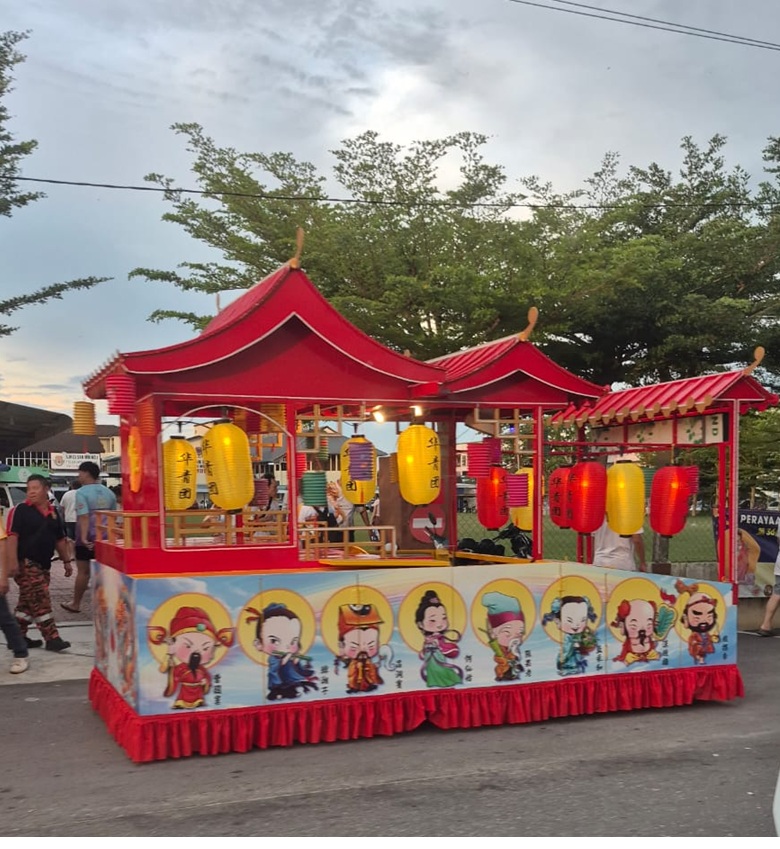
This year’s lantern procession in Teluk Intan
WE